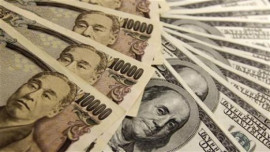
Legend has it that an obsequious courtier, Damocles by name, pandered to his king, the tyrannical Dionysius II. The king offered to trade places, Damocles accepted and found himself enthroned beneath a sword suspended above his head by a single horse’s hair. Damocles begged the king to reverse his wish having discovered that with great good fortune and power come anxiety and real dangers — at which point, enter with trumpets the International Monetary Fund (IMF). The $6.7 billion that is being talked of as a ‘lifeline’ from the IMF to Pakistan is in reality, no more than another iteration of that old demon — circular debt.

The money is to pay off the back-end of a previous loan which Pakistan defaulted on and is not ‘new money’ in the sense that it is going to contribute to anything developmental. The hope is that it will reduce the fiscal deficit, which came close to nine per cent of GDP in the last year. It is also hoped that it will support reforms in the energy sector, but those reforms, as the government is now indicating, are going to come at a swinging cost to the pockets of an already-cash-strapped general public. The IMF is not making a gift of $6.7 billion to Pakistan and the money will have to be repaid, the prospects of which are viewed by some analysts with considerable scepticism.
Overseeing the loan is going to present a number of challenges and an IMF team is due in Islamabad at the weekend to spend a week closeted with senior political figures in order to bolt down the hard realities of compliance. The IMF has agreed to put $547 million upfront — less than the government was hoping for — and the release of the rest over three years is dependent upon the successful completion of quarterly reviews. At the heart of the reforms are a number of elephants that have been present in the national drawing room but studiously ignored for many years. The tax base is going to have to be widened to include those who have evaded it with political connivance for decades; and this is to include agricultural taxation of the very richest farmers and landowners. Subsidies are going to have to be cut from energy costs for the end user — everybody except the very poorest is going to be paying a lot more for their gas and electricity by the end of spring 2014. Loss-making state entities are either going to have to be wound up completely or privatised.
The State Bank of Pakistan is no longer going to be able to lend to the government — effectively a handbrake on the printing of money that the previous government was much enamoured of. At least three private banks have failed to maintain minimum capital adequacy ratios and require urgent capitalisation.
The government has already flagged up the privatisation of PIA, with the airline being split into two parts and a pledge to offer an early exit to ‘excess staff’. The Pakistan Steel Mills and the railways are likewise going to be up for sale though who or what might buy either is an open question as both are essentially long dead but still plugged to federal fiscal life-support systems.
What nobody is saying just yet on the government side is that tens of thousands of jobs are going to be lost in the rationalisation of these entities and civil unrest may be expected as a result. The net outcome of these actions is going to be a growth in inflation and a slowing of growth to between 2.5 and three per cent in 2013-14, with hopefully, a resurgence of growth to between 4.5 and five per cent in 2015. However, there is much pain to be experienced between now and then. ‘No pain no gain’ goes the old mantra and there is now no hiding place politically and our masters really do face the Damocles option.
Published in The Express Tribune, September 7th, 2013.
Like Opinion & Editorial on Facebook, follow @ETOpEd on Twitter to receive all updates on all our daily pieces.





























































COMMENTS (1)
Comments are moderated and generally will be posted if they are on-topic and not abusive.
For more information, please see our Comments FAQ